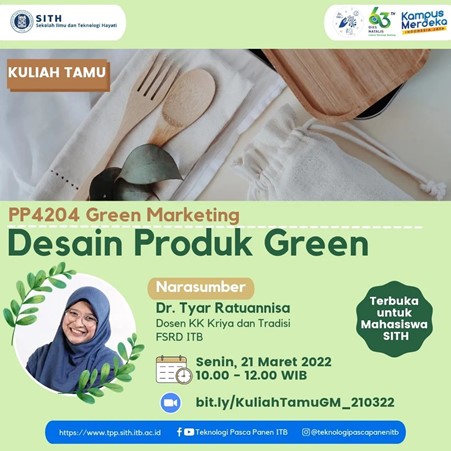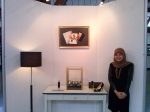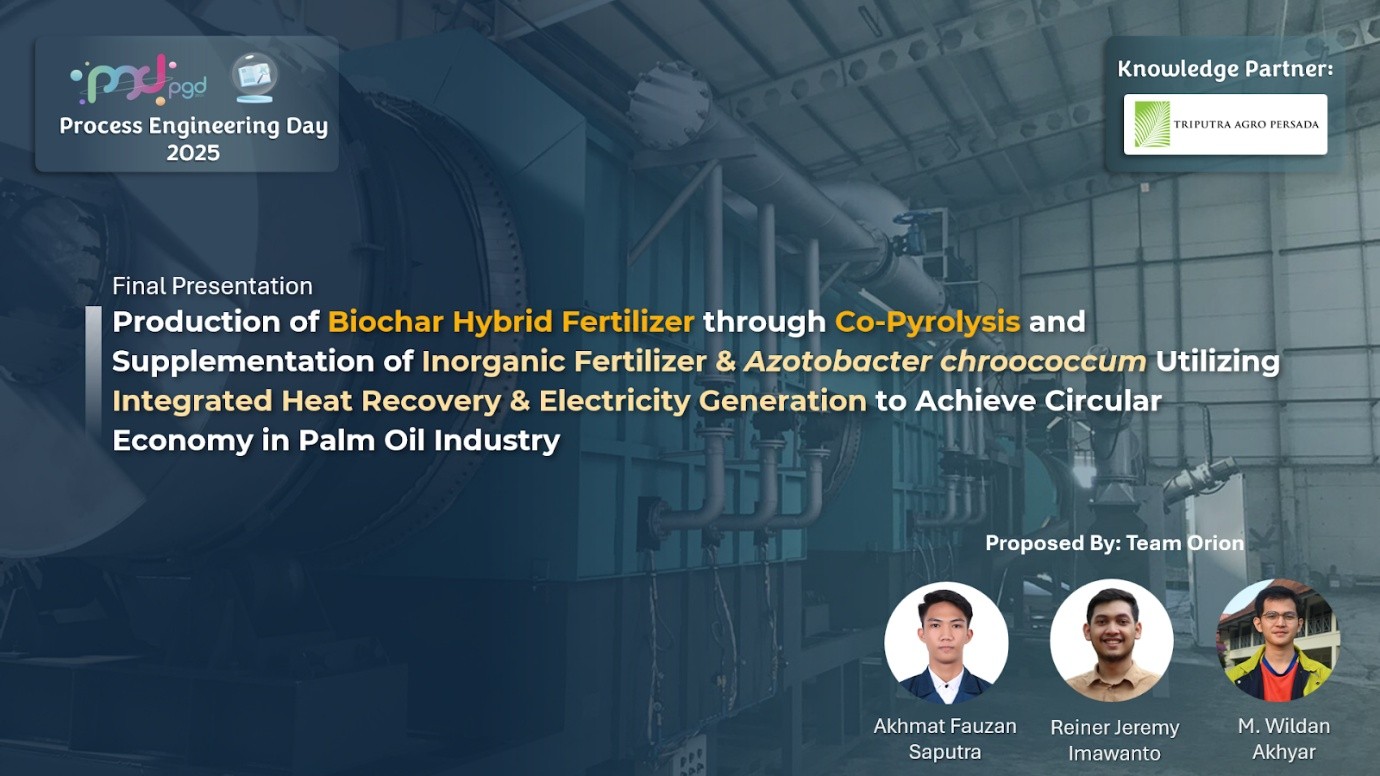Green Design, The Bridge Between Fashion and Environment
By Adi Permana
Editor Adi Permana

BANDUNG, itb.ac.id—Dr. Tyar Ratuannisa from the Craft and Tradition Research Group of ITB FAD (Faculty of Arts and Design) was the guest lecturer for ITB SITH’s (School of Life Sciences and Technology) PP4204 Green Marketing class. The lesson held on Monday (21/3/2022) discussed the designs of green products.
Dr. Tyar explained that environmental issues are brought up first in public with a poetic approach, which is from Rachel Carson’s book titled “Silent Spring”. As a marine biologist, Rachel wrote the poem as a grim reminder of DDTs and pesticides' damage to the environment.
The next milestone was recorded in 1985 when a hole in the ozone layer was detected. In 2019, the young activist Greta Thunberg moved the world through her aspirations for the government and other affiliated parties that do not care less about climate change.
Fast Fashion Concerns
According to Dr. Tyar, one of the causes of environmental pollution is the fast growth of the fashion sector, resulting in declining clothing prices, increasing purchases, and the accumulation of generated waste. Fast fashion is known for its ever-changing trends. Clothes from this industry are affordable due to the low manufacturing cost, fast delivery, and widespread availability. However, they do not possess any significant value.

This phenomenon is a double-edged sword for the environment. As fashion trends continue to evolve, more clothes are bought which leads to more pollution. On the bright side, it can be taken advantage of as part of green marketing. “Through this trend, green marketing can be achieved by introducing the concept of re-wear and thrifting to minimize textile waste,” Dr. Tyar continued.
Green Design Recommendation
Green marketing can be implemented by altering the ongoing trends and preferences. “This suggestion has been proclaimed by Dieter Rams,” Dr. Tyar added.
A good design must be innovative, functional, aesthetically pleasing, comprehensible, honest, inconspicuous, durable, consistent, detailed, environmentally friendly, and minimal.
To apply green design in fashion, the product cycle must be known. This cycle provides quantitative standards for assessing the environmental impact of a material/product. “By understanding the product cycle of clothes, designers can evaluate each stage for reuse and recycling. For instance, they can recycle clothing fibers during the disassembly stage.”
Buzz marketing is another concept that can be used. This involves influencers being appointed as part of the sector's word-of-mouth marketing, which is greener and more sustainable. Their fashion statements and styles can be adopted and re-uploaded by fans while advertising to other followers in a short time.
In conclusion, education regarding marketing strategies is a must to encourage sustainable conduct. Factories can gradually implement the dematerialization process in clothing manufacture, one of which is using the socially ethical eco-materials. “Nevertheless, the easiest effort that we can now do in-person is being more aware of our carbon and ecological footprints in our daily lives,” Dr. Tyar advised.
Reporter: Athira Syifa P. S. (Postharvest Technology, 2019)
Translator: Ruth Nathania (Environmental Engineering, 2019)

.jpg)
.jpg)
.jpg)
.jpg)
.jpg)

.jpg)

